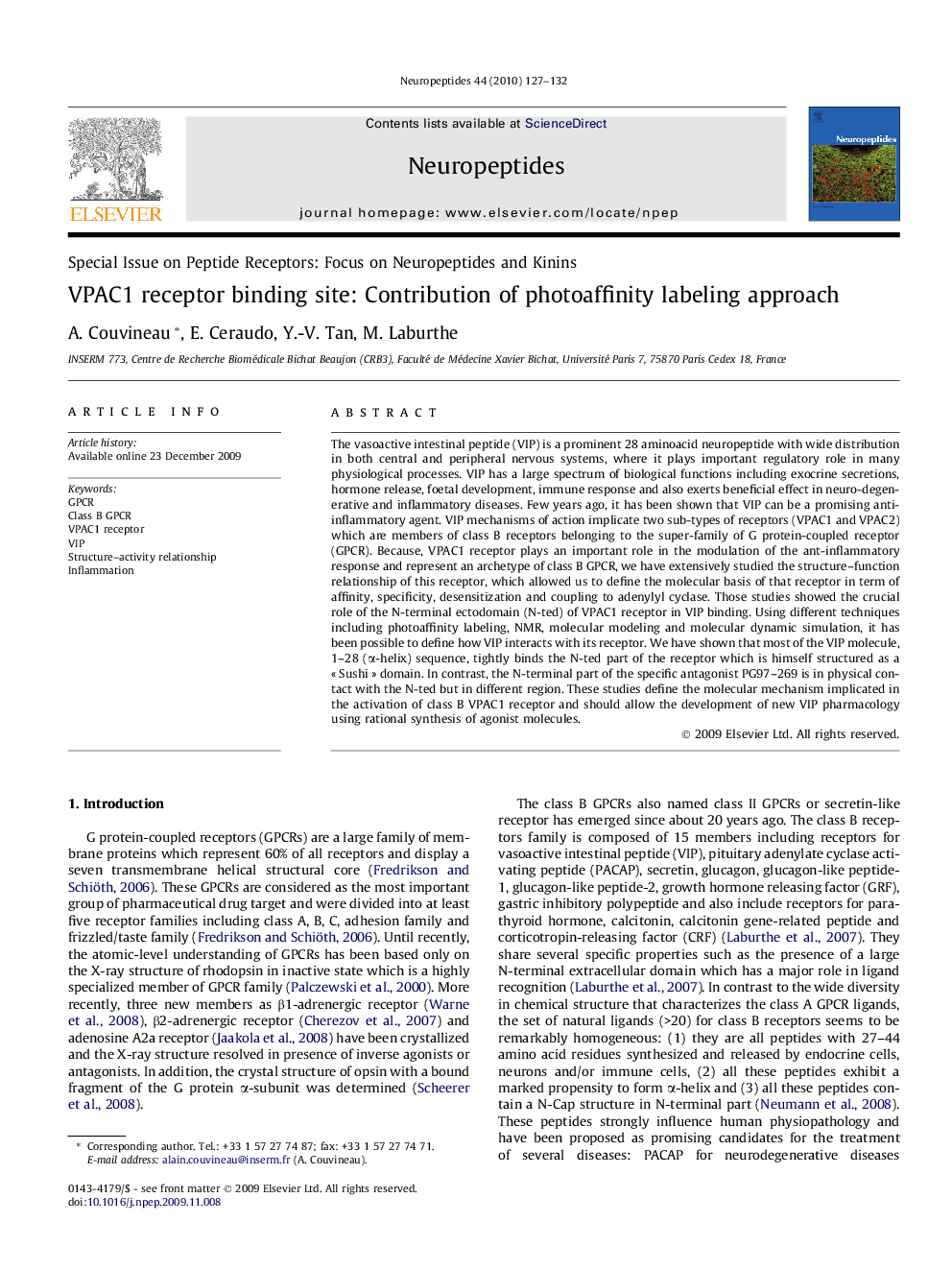| کد مقاله | کد نشریه | سال انتشار | مقاله انگلیسی | نسخه تمام متن |
|---|---|---|---|---|
| 2808237 | 1157743 | 2010 | 6 صفحه PDF | دانلود رایگان |

The vasoactive intestinal peptide (VIP) is a prominent 28 aminoacid neuropeptide with wide distribution in both central and peripheral nervous systems, where it plays important regulatory role in many physiological processes. VIP has a large spectrum of biological functions including exocrine secretions, hormone release, foetal development, immune response and also exerts beneficial effect in neuro-degenerative and inflammatory diseases. Few years ago, it has been shown that VIP can be a promising anti-inflammatory agent. VIP mechanisms of action implicate two sub-types of receptors (VPAC1 and VPAC2) which are members of class B receptors belonging to the super-family of G protein-coupled receptor (GPCR). Because, VPAC1 receptor plays an important role in the modulation of the ant-inflammatory response and represent an archetype of class B GPCR, we have extensively studied the structure–function relationship of this receptor, which allowed us to define the molecular basis of that receptor in term of affinity, specificity, desensitization and coupling to adenylyl cyclase. Those studies showed the crucial role of the N-terminal ectodomain (N-ted) of VPAC1 receptor in VIP binding. Using different techniques including photoaffinity labeling, NMR, molecular modeling and molecular dynamic simulation, it has been possible to define how VIP interacts with its receptor. We have shown that most of the VIP molecule, 1–28 (α-helix) sequence, tightly binds the N-ted part of the receptor which is himself structured as a « Sushi » domain. In contrast, the N-terminal part of the specific antagonist PG97–269 is in physical contact with the N-ted but in different region. These studies define the molecular mechanism implicated in the activation of class B VPAC1 receptor and should allow the development of new VIP pharmacology using rational synthesis of agonist molecules.
Journal: Neuropeptides - Volume 44, Issue 2, April 2010, Pages 127–132